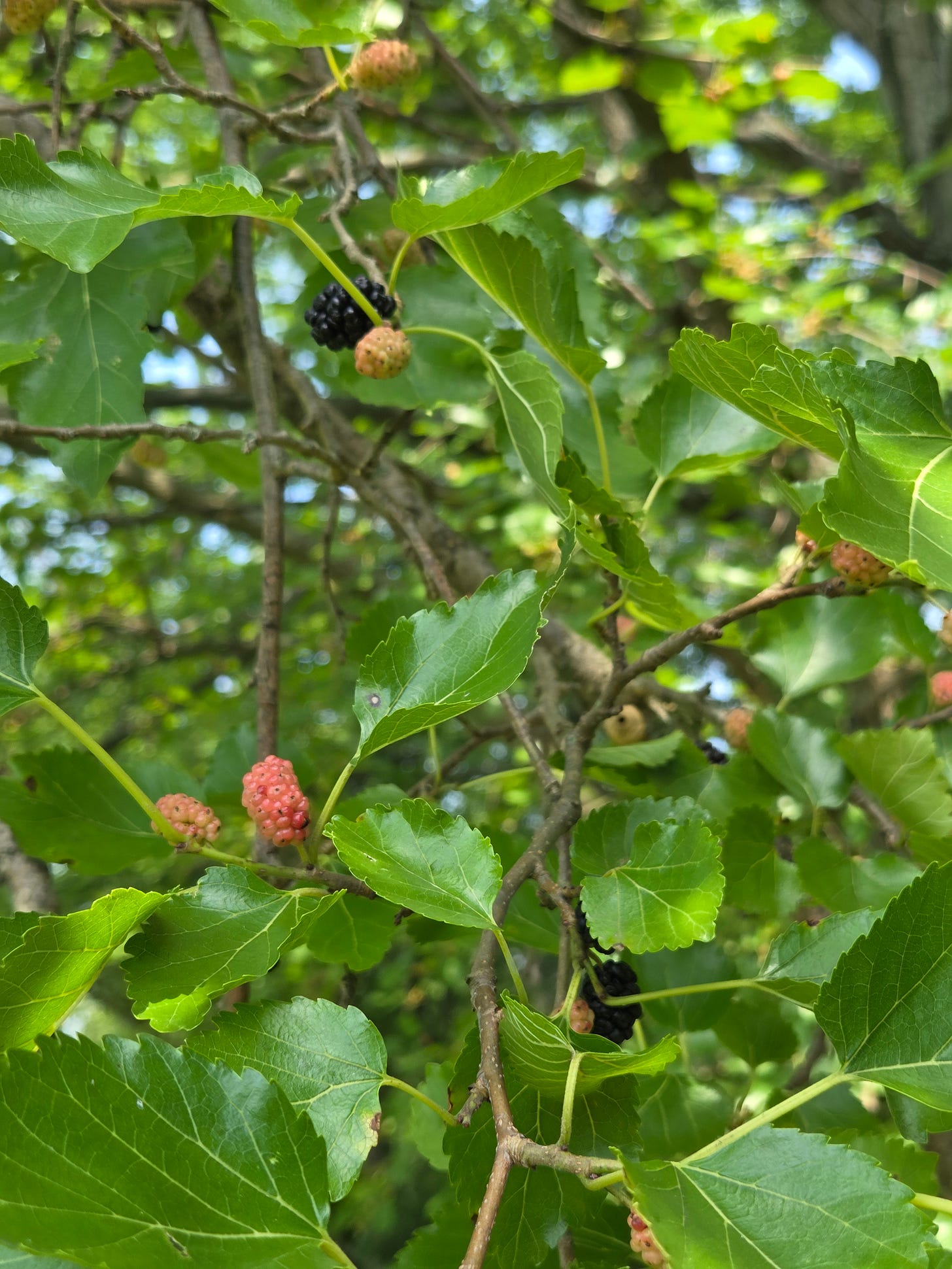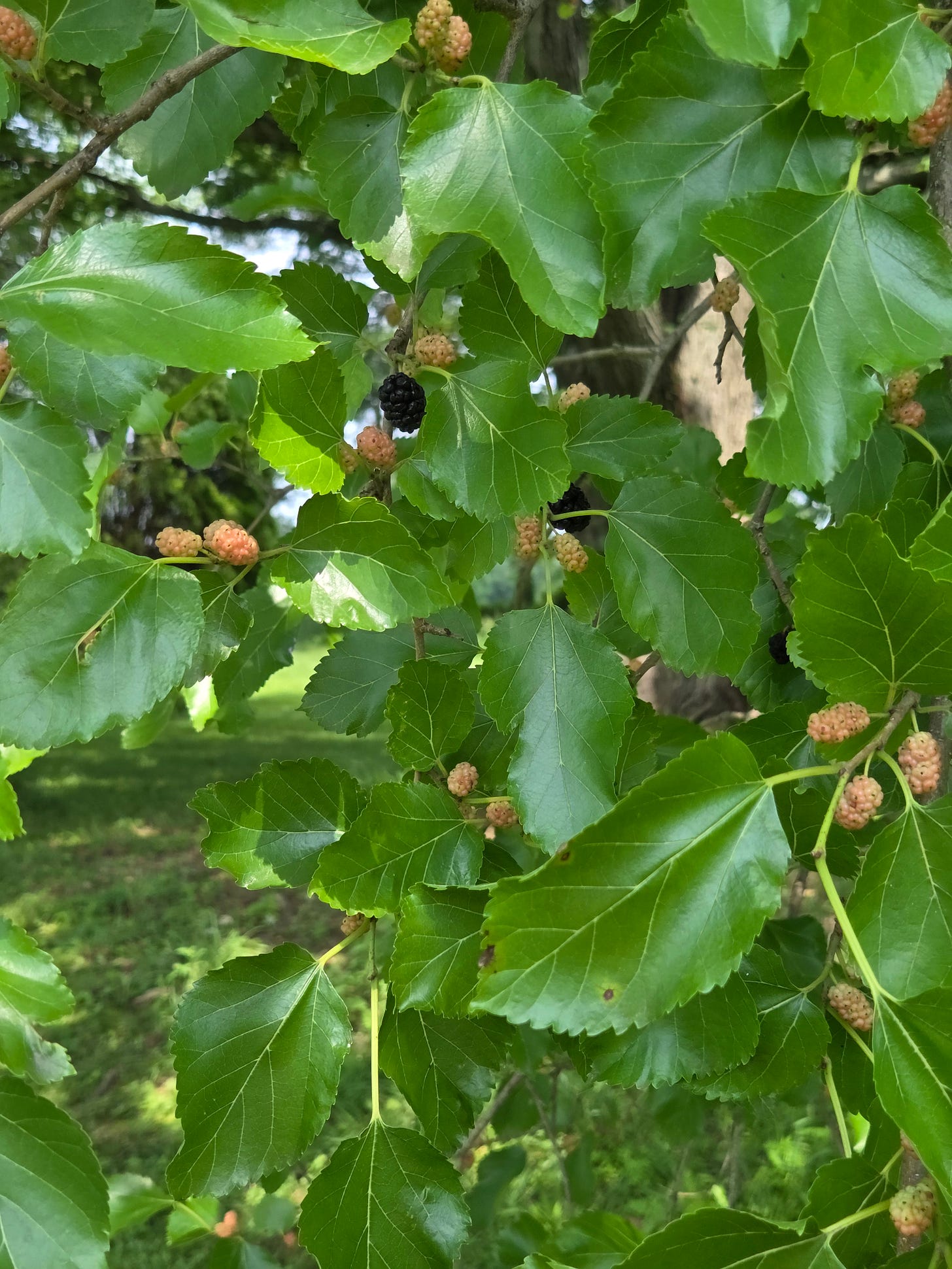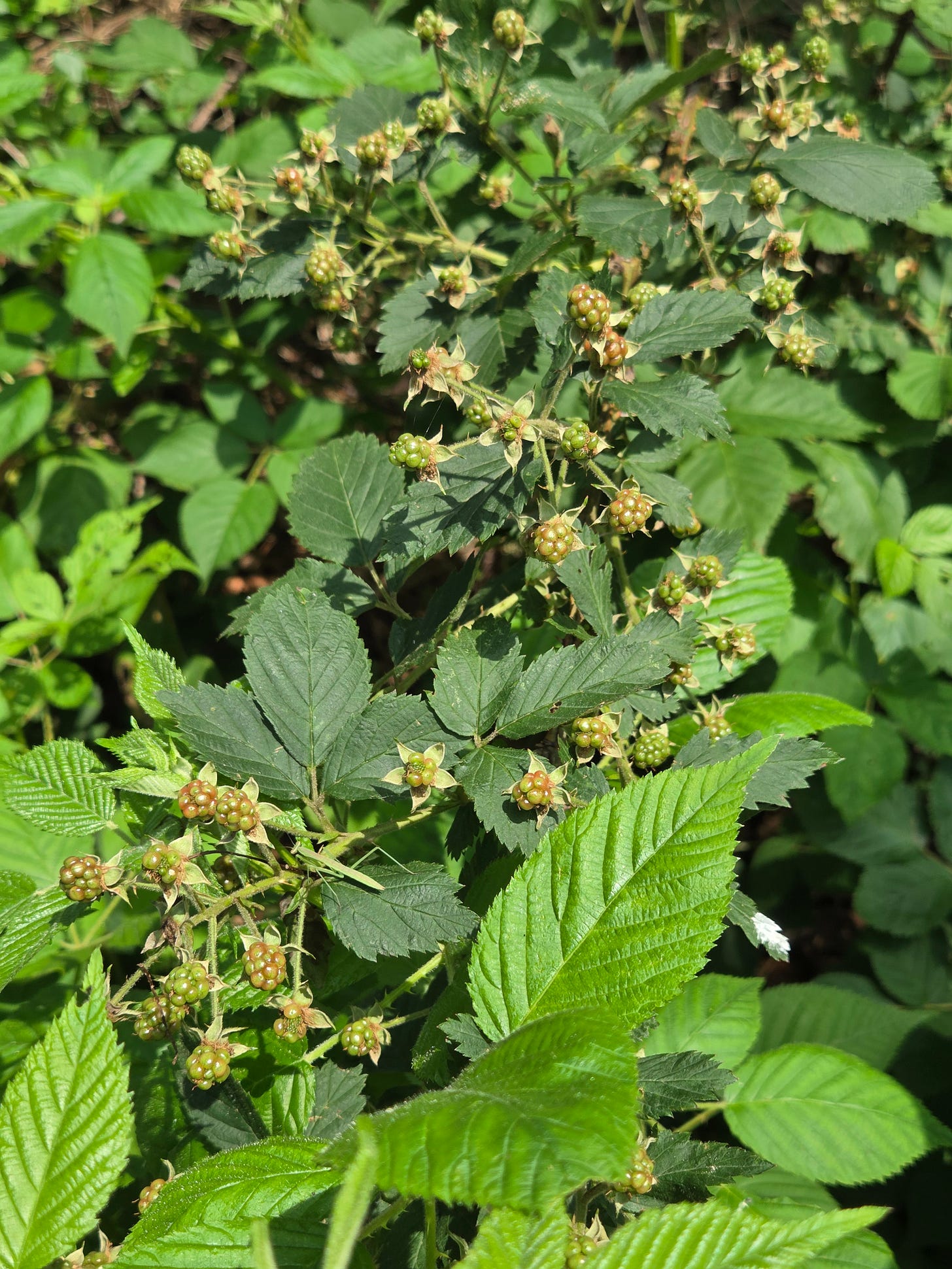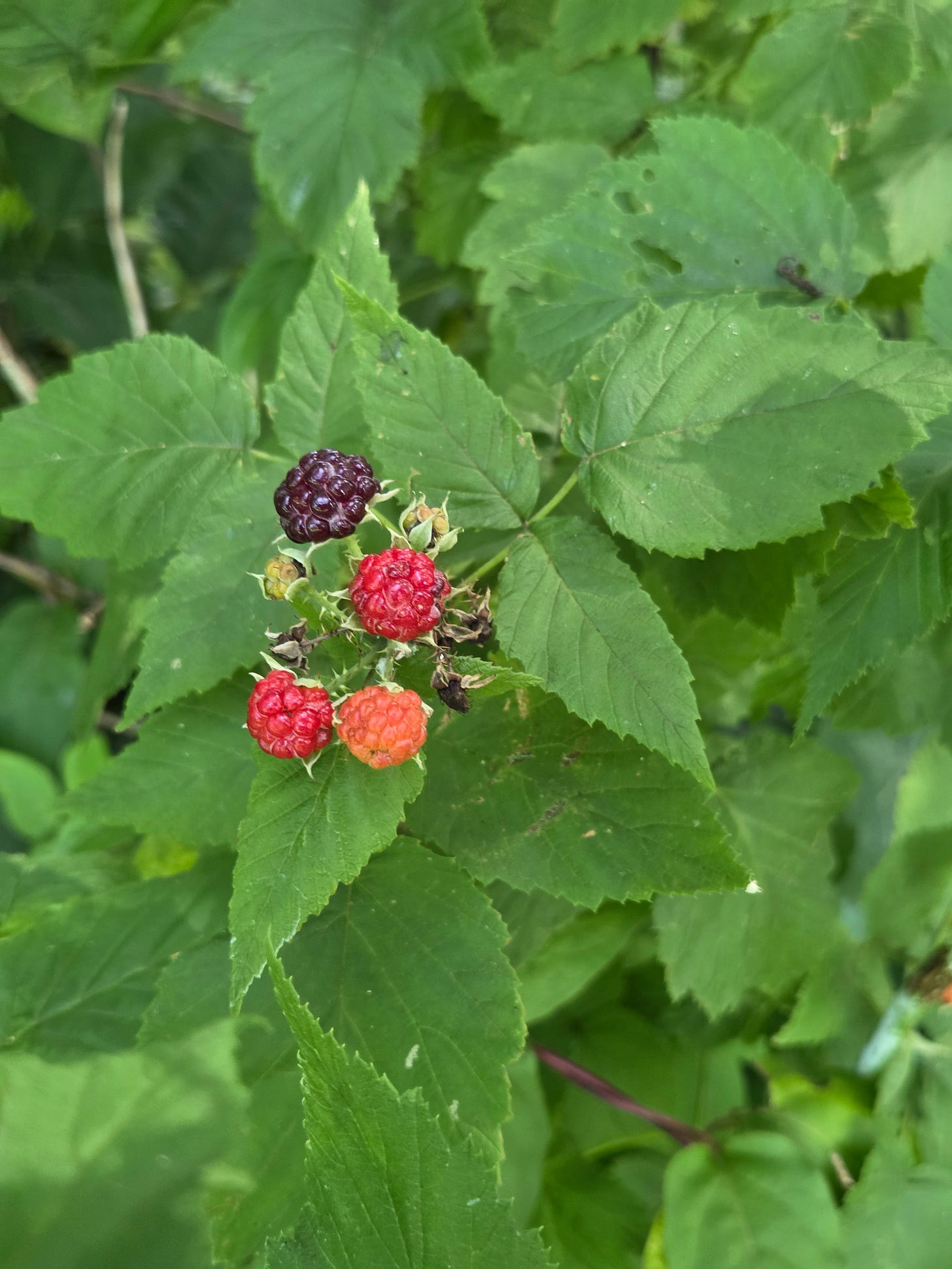By guest author Chestnut Nationalist.
So far, I’ve probably made about a dozen different meads, usually out of the fruit I find in my yard. I’ve been trying rather hard to maintain and cultivate the berries, the trees, and the things I can get out of my yard. I only have 0.4 acres. It’s not a lot, but it’s enough for me to have a front and back garden and a bunch of beautiful trees. It’s where I hope to carve a home, a family, and a way of life.
The mulberries have been by far the most plentiful, and I’ve made — and failed to make — several different mulberry meads. They’re a bit persnickety, more so than the other fruit. They usually have to be cooked because, with all their nooks and crannies, they carry a lot of wild bacteria that will quickly turn your mead into vinegar. But I have made use of all of my vinegar so far. Pumpkin, mulberry, elderberry, etc. Yes, you can make pumpkin into a lot of things, including mead, mixed drinks, and vinegar.
This is about making mead, but it’s also about that little bit of land you have, and the little bit of stuff that you can do on your own.
When I bought this house a couple of years ago, I was most excited about the backyard. I remember walking to the back boundary and looking toward the house, and that scenic image of the trees, shrubs, and contentedness was the view that sold me in an otherwise droll series of open houses. And in retrospect, I was very much correct. It came with a very large wild cherry tree, several smaller ones, a couple of small mulberries, a lot of wild Chinese raspberry (so I’ve been told they’re called), a lot of dewberries (which are a lot like blackberries, if you’ve never seen them), some wild sawtooth blackberries, and some black raspberries, not including what I’ve planted in my garden.
For me, the mead-making is not about the alcohol. As someone who likes to cook a lot, it’s about exploring a flavor, making something interesting — the fermentation process, the bacteria, the chemistry, the yeast. I find them much more enjoyable than actually drinking the final product. But it’s a lot of work, and it doesn’t always end up becoming top-quality mead. I started with dandelion wine, having only really heard about it, and I thought it came out all right. But really, that was just kicking the door in to start making a lot. So I bought one of those cheap kits off Amazon, as you do, and I bought a lot of honey and started with just plain honey mead, which is really, really simple. Between one and two pounds of honey, the rest water in your five-gallon container, an airlock, some yeast — it doesn’t even have to be wine yeast. You can just use baking yeast, although I would certainly recommend a particular wine yeast.
It’s really simple. That doesn’t mean it works all the time. That doesn’t mean everything comes out quite nicely. Simple, not foolproof. It does require patience — something I do not have the most of. You have to wait at least two weeks for the yeast to do its work, probably another two for the malic to become lactic acid, and then arguably another six months in the bottle just waiting for it to finish maturing. I don’t think I’ve managed to wait that long for any of mine yet.
But it’s still more about my yard than it is about the alcohol. I’ve had to buy ladders. I’ve bought tarps. I go and shake the branches of my mulberry trees when they’re mostly ripe to try to collect as many as I can, and then use the tarp to funnel them into a bucket. Then I have to wash all the bugs, sticks, and leaves off of my collection of mulberries. Sometimes I rinse them in vinegar just to help clear off any bacteria I don’t want. So far, I don’t think it’s actually helped. But I might try again, just in case. It has become a yearly ritual now for me to walk around my yard beginning in early spring to see which of my plants are coming back the way I wanted them to, which ones I cut back too much last year, and which ones I should have cut back more. Most of the wild berries and such in my yard are essentially perennials, although I do encourage them to replant and regrow with all the berries that I was not able to pick in time. I’ve watched several different mulberry trees pop up across my yard as the birds have helpfully delivered a lot of seeds to all the areas where they nest.
This is my first year doing a proper cherry wine, as opposed to just blending it with my mix of wild berries. It’s interesting. It has a somewhat grassy note, which could be just the problem of not separating the leaves from the cherries quite closely enough. Or it could be that I’ve just never made cherry wine before. Regardless, I’m quite excited to finish this wine eventually, back-sweeten it, and bottle it up. My lovely neighbor, in her elder years, lets me have essentially as much fruit as I want from her trees. She has quite a lot more land than I do, which is quite well maintained. She and her late husband did a wonderful job maintaining these surrounding areas, and I try to preserve them too, now that he’s passed.
Every year I go and look at the mulberries, and I see which trees have finally matured enough to start fruiting and which ones have not. This year, I’ve been quite lucky. Even though the farm next to me cut down their very large and very old mulberry tree, I have found several smaller ones in my own yard, and on my neighbors’ properties, that have borne me quite a lot of fruit.
I’ve spent many hours this year increasing the size of my garden and planting more things — specifically watermelon. And if those do well, I might even do a watermelon wine, although I do not believe they will last that long in my kitchen.
It’s not a lot of yard. It’s enough to be annoying to mow. It’s not a lot of house, but it’s enough for all of my small projects to hide in the garage or the basement — crowd the kitchen, much to my wife’s ire.
But this is just the one way I know how to connect to my property. How to maintain, own, care for it. To find some use for it. That’s not always the way you need to take care of your land, but it gives me a reason to walk around outside every day, to inspect my trees, to cut down encroaching vines, to try to cut back the invasive honeysuckle.
I’m still not good at all this. I’m really not. I don’t know which suckers to prune. I don’t quite know whether I should be topping trees to keep them short or just letting them grow. There are a lot of things I could be doing better. But each year, I do a little bit better. I learn a little bit more. I’m not sure my meads and wines have improved year over year, but I have experimented with more fruit and techniques each year, so there’s progress being made — even if it’s in a breadth-first instead of depth-first direction.
And it’s a small thing. It’s something I made. I get to share it with my friends, and I’m going to share it hopefully with more OGC members.
And maybe it’s a tradition for me and my property. I don’t have a lot of those.
I wasn’t passed an enormously rich tradition by my parents. I’m grateful to have inherited one in this country, but I don’t think I have many personal traditions. So each day, when I walk my property, inspect my garden, and spend a little too much time fiddling with it — probably not to its benefit, but maybe to mine — I’m building that. That’s something maybe I can pass down. Not just beautiful trees, not just a well-developed garden with rich topsoil, but a specific purpose. A habit.
It’s not quite the adventures of the open West, but for this little piece of land I have, it’s enough. I think I’m doing an okay job, and I’ve started something. Something I can continue every year.











Worth also mentioning that Chestnut is fearless in paintball - WARRIOR CHUD